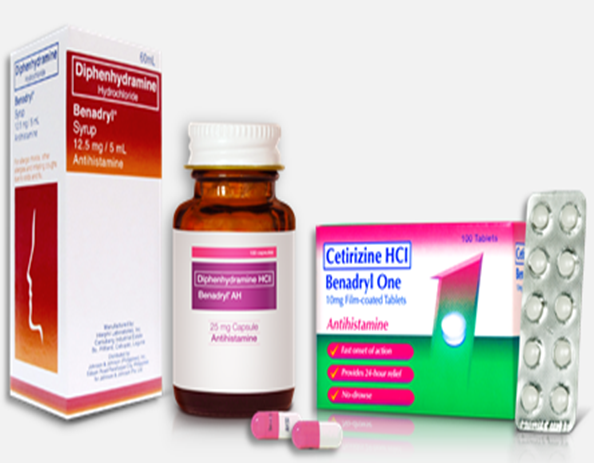

Allergy in itself can be a nuisance for grown-ups; much more when all that sneezing happens to children. The reality though is, each year, the number of children – babies included – who are affected by allergies seem to grow.
Given the notoriety of some antihistamines in making people drowsy, it begs the question: Are antihistamines safe to use in all conditions - in the young especially? In general, the safety of administering antihistamines – diphenhydramine included - depends on so many factors.

Allergy in itself can be a nuisance for grown-ups; much more when all that sneezing happens to children. The reality though is, each year, the number of children – babies included – who are affected by allergies seem to grow.
Given the notoriety of some antihistamines in making people drowsy, it begs the question: Are antihistamines safe to use in all conditions - in the young especially? In general, the safety of administering antihistamines – diphenhydramine included - depends on so many factors.
The type of antihistamine to be used
Antihistamines can be sedating and non-sedating. Sedating antihistamines such as Diphenhydramine (Benadryl®AH ) for kids > 2 yrs old may cause drowsiness so it’s therefore recommended that kids not be engaged in a lot of strenuous play during the duration of the treatment.
On the other hand, for patients using non-sedating or no-drowse antihistamines such as Cetirizine (Benadryl® One), activities may be continued as usual.
Age
While antihistamines are considered over-the-counter medicines, bear in mind that both the FDA and the Philippine Pediatric Society do not recommend the use of antihistamines in children below two years of age (especially neonates) – at least without a pedia’s go signal. Because infants have immature immune systems, they are more predisposed to side effects. For infants and toddlers, always seek your doctor’s advice prior to giving a dose.
Pre-existing health conditions
There are a number of health conditions wherein antihistamines might be not be sufficient in treating allergic reactions (such as severe anaphylactic reactions) or contraindicated in children and infants, including lung disease such as asthma and chronic bronchitis; bladder and bowel issues; thyroid problems; heart disease; and kidney disease. As always, make sure you’ve given your doctor your child’s full health history prior to medication.
As a general rule, OTC antihistamines like Diphenhydramine (Benadryl® AH), and Cetirizine (Benadryl® One) are safe to use on children given that there’s prior approval from the pediatrician and no other preexisting conditions or medications are present. For more information on its dosage and administration, please refer to the package insert found in the box.
In the Philippines, most pediatric allergy cases involve young children and teenagers, with food allergy topping the list. 2* In an allergy survey concerning Southeast Asian countries, it has been found out that the most common allergies in Filipino children is shellfish (5.23% of subjects), followed by fish allergy (2.29%), then peanuts and tree nuts (0.43%). 2*
When introducing solids to infants, give only one food at a time (at least every three days). This allows you to easily isolate and identify the offending allergen in case an attack occurs.
Avoid giving common allergens early in life. Exclusive breastfeeding is recommended by the WHO and UNICEF till age two; it is less allergenic than formula milk and has been found to decrease the incidence of allergies in children. Further, it’s advisable to give dairy after your baby has reached his first birthday; eggs after the second year; and shellfish, fish, and nuts after the third year. 3* Allergies resemble flu, common colds and cough in symptoms. If your child is suffering from itchy, runny and stuffy nose and itchy, watery eyes (especially if the symptoms tend to recur several times a year), take him to a doctor as early as possible to prevent symptoms from getting worse.


